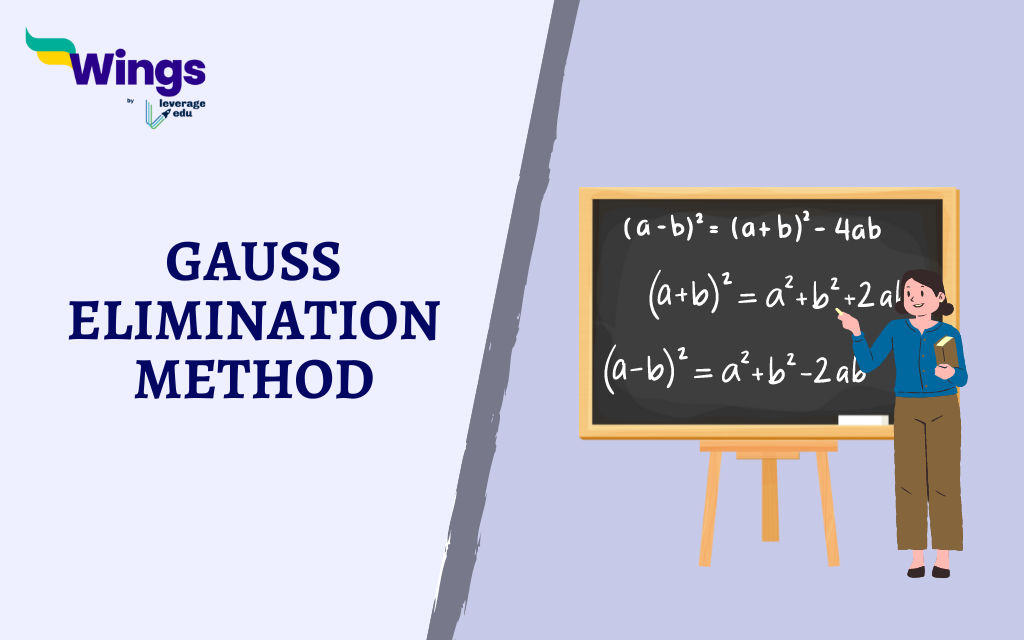The Gauss Elimination Method is a fundamental numerical technique used to solve systems of linear equations. It is named after the German mathematician Carl Friedrich Gauss and is used in fields such as engineering, physics, and computer science. Furthermore, this method makes the process of solving complex systems of equations by transforming the system into an equivalent triangular system, hence making it easier to find the solution. Read on to learn more in detail about the Gauss Elimination Method, its theory, steps and Example.
Also Read: Linear Equation in Two Variables
Theory of the Gauss Elimination Method
The theory behind the Gauss Elimination Method is a way to transform a system of linear equations into an upper triangular form through a series of elementary row operations. Moreover, these operations include adding a multiple of one row to another, multiplying a row by a constant, and then interchanging rows. Additionally, after performing these operations systematically, the original system is transformed into a simpler form where the solutions can be easily determined.
The Gauss Elimination Method is based on the following principles:
- Start with a system of linear equations in the form of Ax = b, where A is the coefficient matrix, x is the vector of the unknowns and b is the constant vector.
- Thereafter, perform row operations to create an upper triangular matrix, where all elements below the main diagonal are 0.
- Then, solve the simplified system of equations using Back Substitution to find the values of the unknowns.
Also Read: Coding Decoding Questions
Steps of the Gauss Elimination Method
Here are the steps of the Gauss Elimination Method:
Forward Elimination
First, you need to complete the Forward Elimination steps which are as follows:
- Begin constructing an augmented matrix by combining the coefficient matrix A and the constant vector b.
- After that, you need to iterate through each row of the matrix. Thereafter, selecting a pivot element (usually the diagonal element) eliminates the coefficients below it.
- Use elementary row operations to create zeros below the pivot element by subtracting multiples of the pivot row from the rows below it.
Back Substitution
After completing the steps of Forward Elimination, you need to fulfil the steps of Back Substitution, which are:
- Furthermore, once the matrix is in the upper triangular form, you need to start from the last equation and solve for the last unknown.
- Next, substitute this value back into the previous equations to find the remaining unknowns by proceeding in a backward manner until all unknowns are determined.
Also Read: Short Maths Tricks
Example of the Gauss Elimination Method
The Example of the Gauss Elimination Method given here will clarify the overhead given Steps of the Method. Take into consideration this system of linear equations:
2x + 3y – z = 1
4x – y + 2z = -2
3x + 2y – 2z = 2
First, tackle the Forward Elimination steps:
- Construct the augmented matrix:
- Then perform row operations to create zeros below the pivot elements:
- Row Row2 = Row2 – 2*Row1
- Row3 = Row3 – (3/2)*Row1
Now getting to the Back Substitution:
- The matrix after forward elimination:
- Then, solve for z, then y, and finally x using Back Substitution.
Thus, following these steps of the Gauss Elimination Method simplifies the process of solving systems of linear equations. Moreover, it gives you a systematic approach to finding solutions efficiently and accurately.
Related Blogs
I hope this helps! Did you like learning about the Gauss Elimination Method? Keep reading our blogs to learn more about the basic concepts of Maths!
 One app for all your study abroad needs
One app for all your study abroad needs














